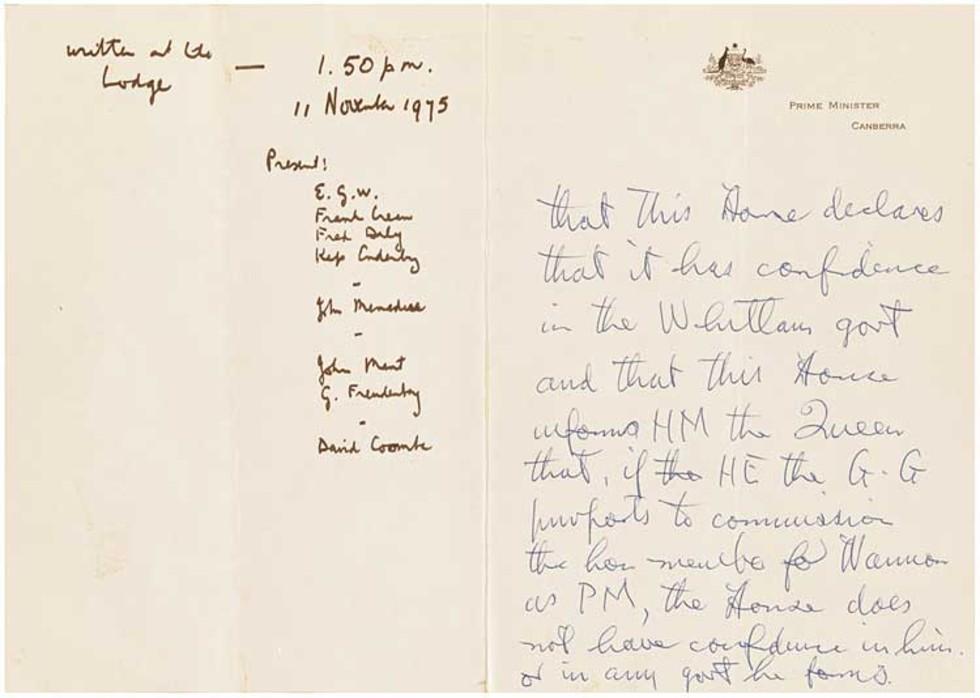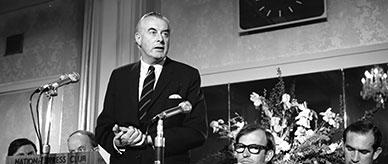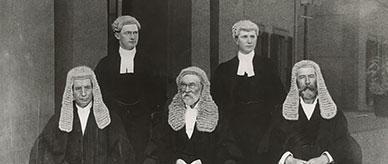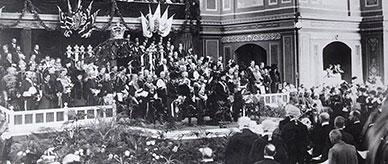


About this record
This is the draft notice of a motion to put before Parliament, handwritten by Prime Minister Gough Whitlam at the Lodge on 11 November 1975. It was written on the day he was dismissed from office by Governor-General Sir John Kerr.
The motion has two elements. The first is a declaration by the House of Representatives that it has confidence in the Whitlam government. The second indicates that, if the Governor-General commissions Malcolm Fraser as prime minister, the Queen would be informed that the House had no confidence in him, or in any government he forms.
Educational value
- This document refers to the dismissal of Prime Minister Gough Whitlam in 1975. It is a significant document in Australian political history because it reveals Whitlam's thoughts and actions in the hours after he was dismissed. A little after 1.00 pm on 11 November, the Governor-General had informed Whitlam his commission had been withdrawn. Whitlam immediately went to the Lodge (the prime minister's residence in Canberra) to consult with his advisors and to draft this motion.
- The draft motion makes the point that only Whitlam and the Labor Party had the necessary majority to form government. Because government is formed on the basis of the majority of members in the House of Representatives, Whitlam believed his party's majority in the House was the key to regaining power. The motion also points out that a government led by Malcolm Fraser could not be sustained, because it would be defeated on the floor of the House of Representatives.
- This draft differs from the motion presented by Whitlam in the House of Representatives that afternoon. The reference to ‘the Queen’ was removed and the motion was reworded to acknowledge that Fraser had already been commissioned as prime minister.
- The motion was passed by the House, but the Speaker of the House of Representatives, Gordon Scholes, was unable to deliver it to the Governor-General before parliament was dissolved. However, Scholes (a member of the Labor Party) did send a protest about the Governor-General to the Queen, who declined to intervene.
- The caretaker prime minister and the Governor-General acted quickly so that Whitlam’s call for a ‘confidence’ vote soon became irrelevant.machinery of government operating until an election could be held. Accordingly, papers were drawn up to dissolve both houses of parliament and to call a general election. The Governor-General signed these papers and a ‘double dissolution’ was announced on the steps of Old Parliament House at 4.40 pm that day.
- Whitlam’s dismissal was the culmination of events that had begun earlier in the year. The Senate's refusal to pass the government's budget bills had resulted in deadlock with the House of Representatives—and this became a crisis as the government ran out of money.
- Whitlam was determined not to seek a double dissolution and a general election. The Governor-General sought the advice of Chief Justice of the High Court of Australia, Sir Garfield Barwick, and decided to use his reserve powers under the Australian Constitution.
- Whitlam presented this important personal document to the National Archives of Australia in June 2008. At this presentation, Whitlam restated his belief that his dismissal was the result of a conspiracy between Governor-General Sir John Kerr, the Chief Justice and the Leader of the Opposition—in order to get rid of him as prime minister. Since 1975, Whitlam has maintained that the conspiracy involved subverting the fundamental parliamentary principle that ‘governments are made and unmade in the House of Representatives—in the people’s House’.
Acknowledgments
Learning resource text © Education Services Australia Limited and the National Archives of Australia 2010.
Related themes
Need help with your research?
Learn how to interpret primary sources, use our collection and more.



